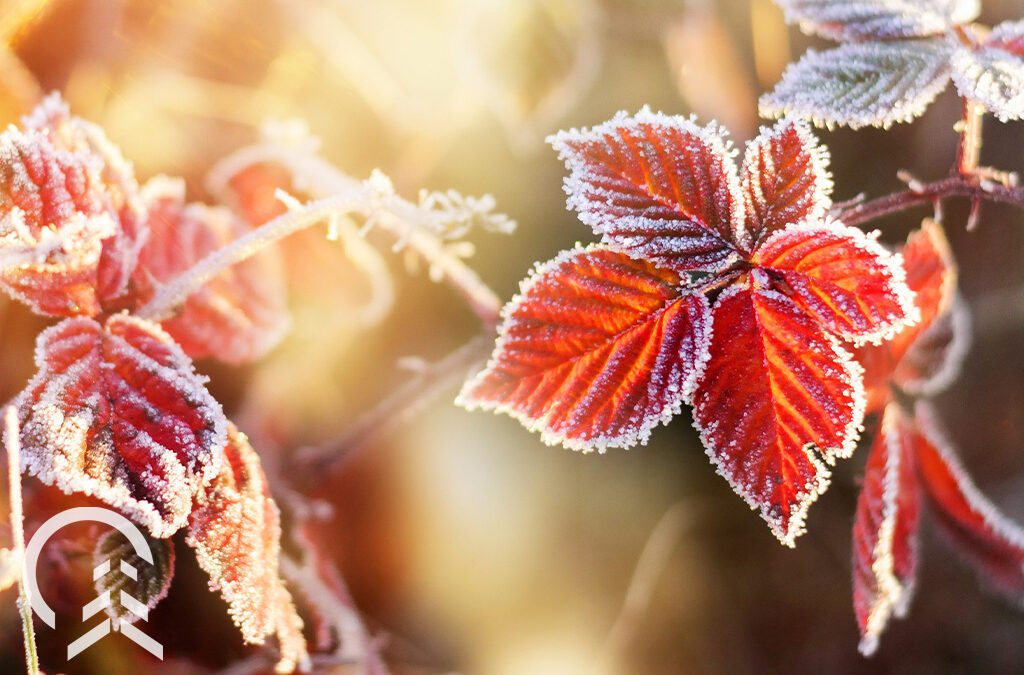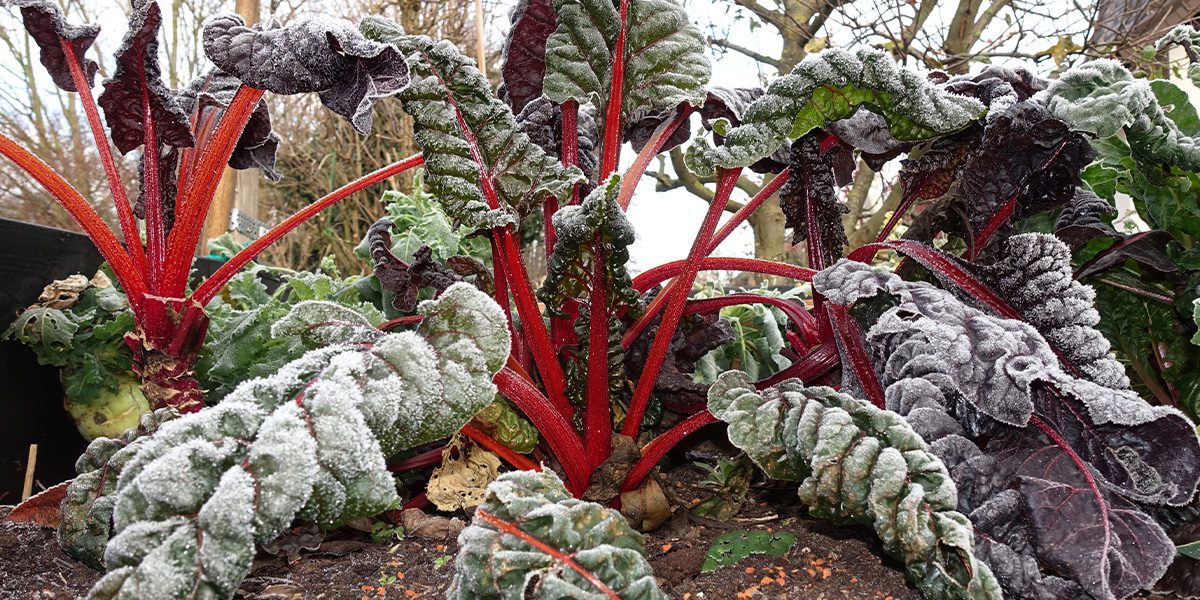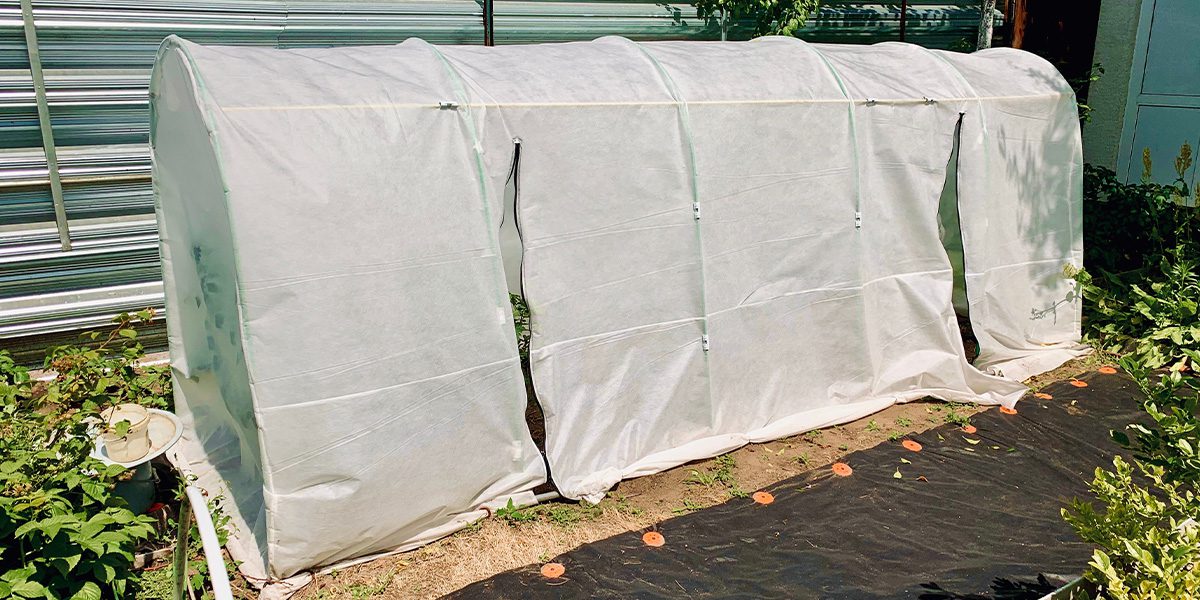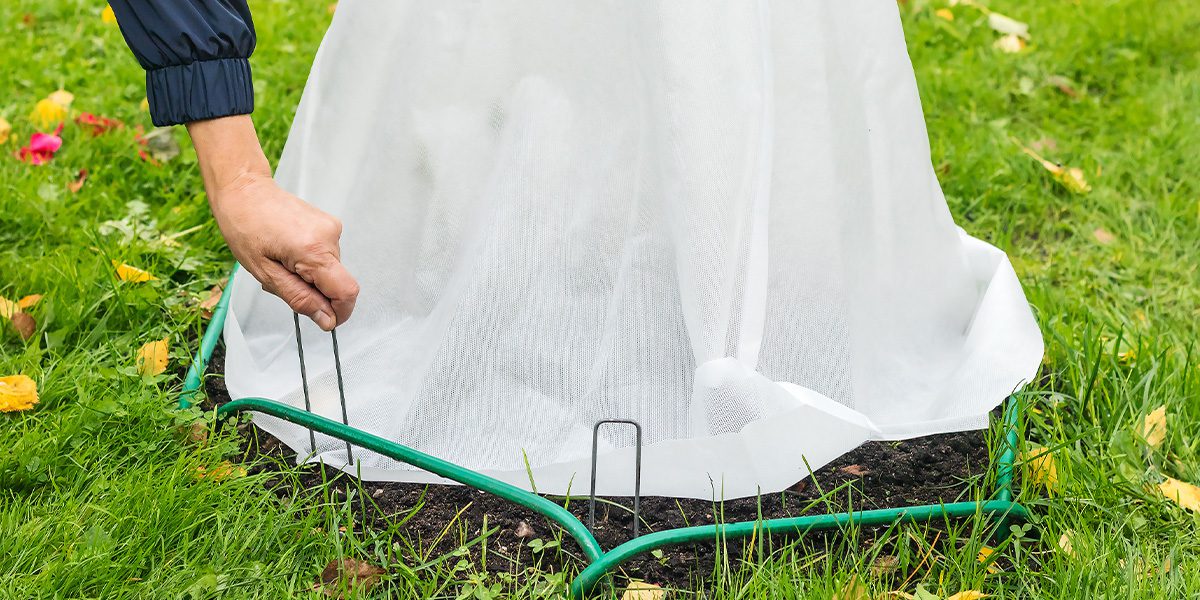The first frost of the year is a major turning point in the gardening season and is the first taste of the coming winter.
Frost can end the growing season for many of our plants, but with the right preparations, we can protect tender plants and prolong the vegetable harvest for many more weeks here in Chicago. If you’re not ready to say goodbye to the garden just yet, you’ll love this guide to anticipating, preparing, and protecting your garden from frost!
When Does Frost Come to Illinois?
Up here in Northern Illinois we can expect to see frost at the end of October or the beginning of November. It tends to vary year-to-year, but when overnight temperatures start to dip it’s time for gardeners to pay attention to the weather forecast. Keep your ears open for frost advisories and note the average overnight lows in your region. If you feel an unusual chill as the sun goes down, you know it’s time to mobilize!
A Guide to Preparing Plants for Frost
If you’ve never thought about frost in the garden before, you may be wondering: “What’s the harm of a little frost anyway?” Your perennials, shrubs, and trees live outside all winter anyway, so why should you worry about a little frozen dew? Most plants that are hardy to our growing zone don’t need protection from frost, but other garden goodies like vegetables, annuals, and those houseplants that spent the summer on the sun deck will need covering or brought inside if you’re hoping to keep them thriving. One thing you can explore is trendy indoor greenhouse ideas for winter. Here’s what to do:
- Harvest Vegetables: When frost becomes imminent in late October, it’s a good idea to harvest any ripe vegetables and fruits. Unless they’re covered overnight, frost will damage them, and even if they’re covered it’s still prudent to harvest vulnerable vegetables to avoid the risk of loss before a frost event.
- Cover Vulnerable Vegetables: Just because temperatures dip below freezing overnight, doesn’t mean your vegetable season must end. If you cover your crops, you can still enjoy fresh produce for many weeks. Some vegetables are more tender than others, so view our list below to know what needs protection.
- Move Houseplants Inside: Any vacationing houseplants won’t appreciate a frosty night. In fact, it could be the last night of their lives. So be sure to move any houseplants indoors before the frost comes. In fact, start the process of transition many weeks in advance and make sure they’re indoors by the time temperatures dip below 50F.
- Protect Tender Annuals: Just like your vegetables, many annual flowers are more tender than others and need protection if you wish to keep them alive past the first frost. Sometimes, it’s as simple as moving them into the garage or under the shelter of a porch. You can also cover them with a blanket or tarp, as you’ll see below.
A Guide for Vegetables that Need Frost Protection
| Frost Tender Vegetables | Vegetables Tolerant of Light Frost (32-28F) | Vegetables Tolerant of Hard Frost (24-28F) |
| Tomatoes
Peppers Cucumbers Beans Corn Eggplant Squash Pumpkins Basil |
Beets
Carrots Chard Cauliflower Onions Lettuce Radish Peas Spinach |
Broccoli
Cabbage Chinese Cabbage Brussels sprouts Kohlrabi Kale Parsnip Turnips Collards |
How To Cover Plants from Frost in Illinois
To protect vulnerable plants from frost, you can use any of the following methods:
- Bedsheets or Tarps: Cover the plants with a sheet or tarp. Make sure that you prop it up above the plants, because any part of a plant that touches the material will freeze. Also, secure the covering to the ground on all sides so no frost can sneak in from below.
- Cloches: Bell-shaped cloches, glass jars, or milk jugs can be placed over individual plants to trap in warmth and shield them from frost.
- Row covers: Row covers are a convenient solution to protect plants from frost repeatedly and to prolong your harvest season. They consist of plastic hoops over your beds, which can be covered as needed with a fabric or plastic sheet.
- Warm Water Jugs and Watering: During cold nights, water your plants before you cover them or install jugs of warmth beneath the coverings. Both methods provide extra warmth for your plants.
Key Point: Ensure that you remove coverings during the day to allow sunlight and airflow to reach your plants.
Mulching and Insulation Before Winter
When winter comes, most perennials, shrubs and trees are hardy enough to survive the cold of a Chicago winter. However, some vulnerable ones do benefit from an extra layer of mulch to protect the roots. This includes newly planted trees and shrubs, and any plants that are not quite hardy to our Zone 5a or 5b growing zone. The mulch protects the roots from frost-heaving, extreme cold, and the freeze-thaw cycle of spring.
A Guide for Dealing with Frost Damage
Suppose you forget to cover your plants or somehow frost sneaks in below your coverings. What do you do?
Before you take out the clippers, wait a day or two for the damage to reveal itself. Once it’s visible, cut away any black or dead parts of the plants. If just a few leaves have been damaged, your plant will likely recover!
With the right preparations, frost doesn’t have to end your gardening season. When you cover tender plants overnight, you can easily extend the growing season for many days and weeks, allowing you to enjoy more blossoms and fresh food longer!
For more guidance on winter frost, don’t hesitate to visit our garden centers in Bloomingdale and Carpentersville!
Platt Hill Nursery is Chicago’s premier garden center and nursery.





